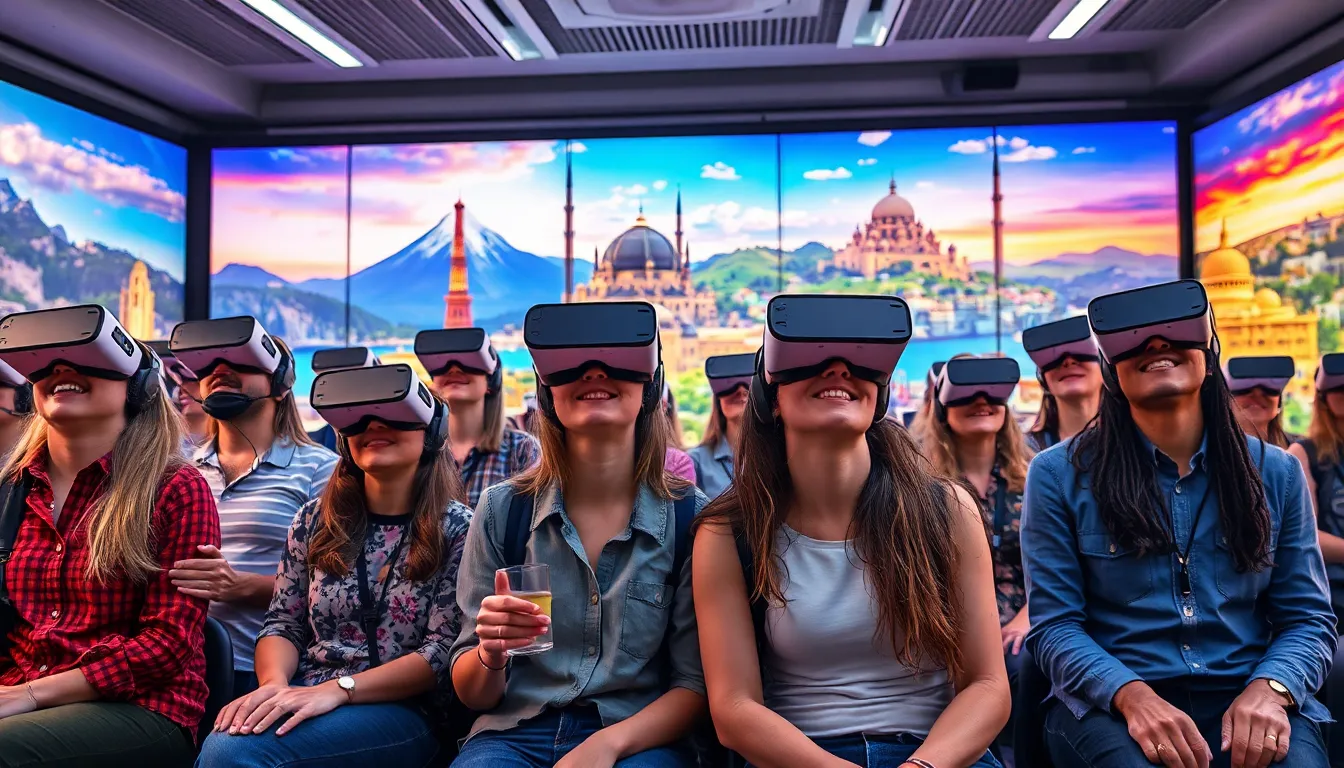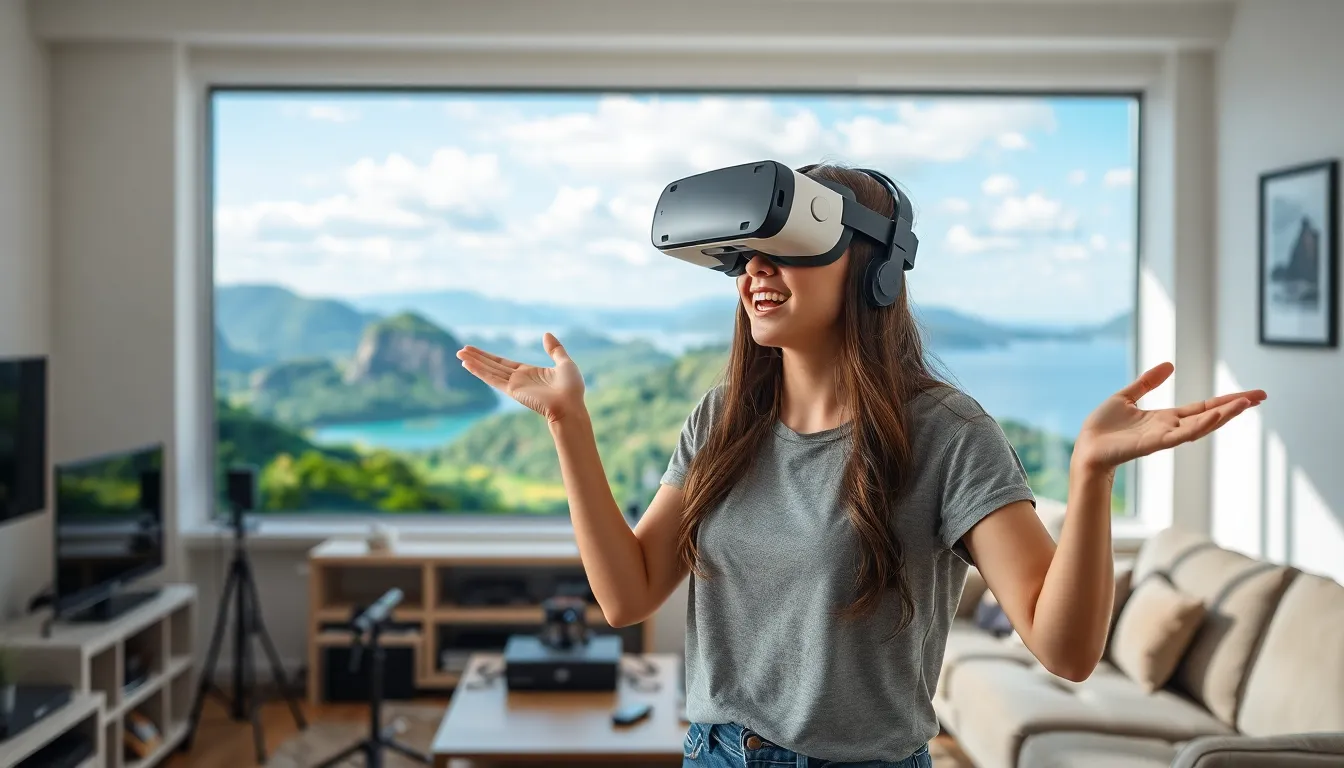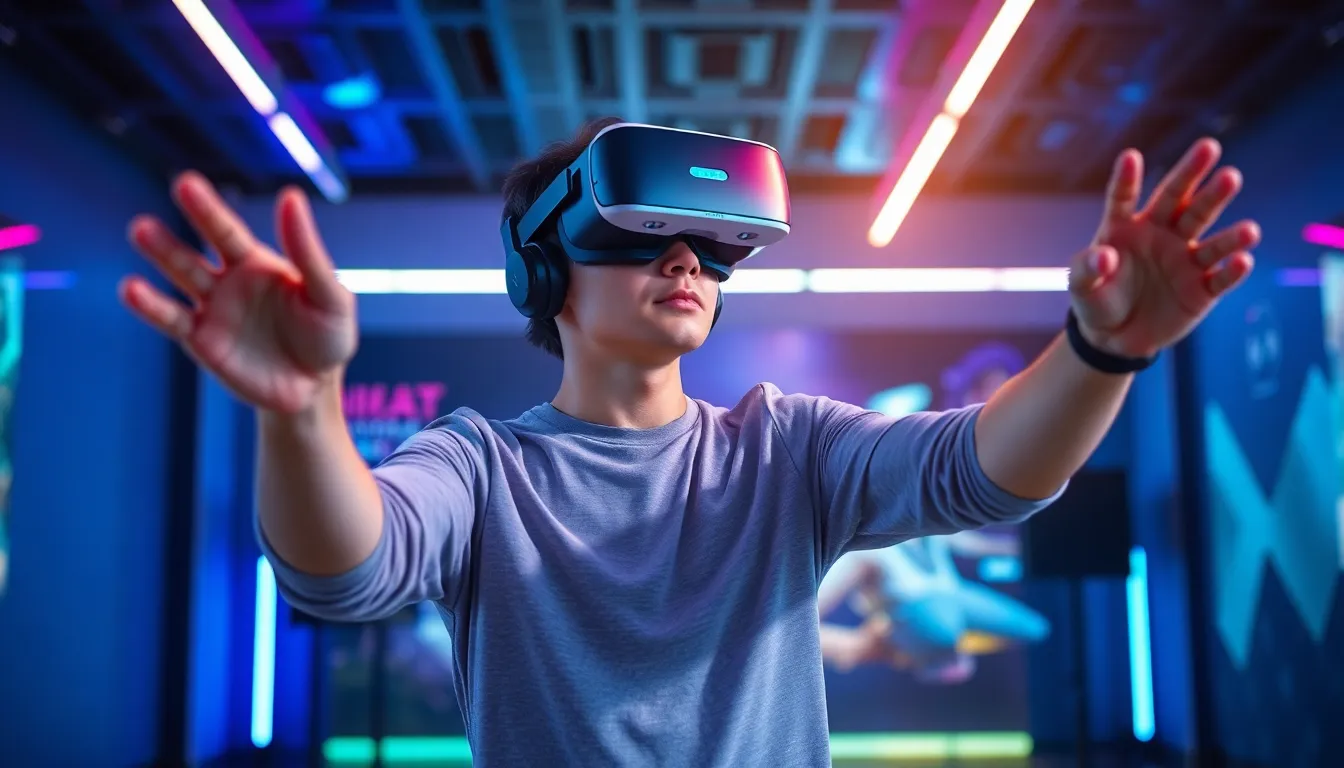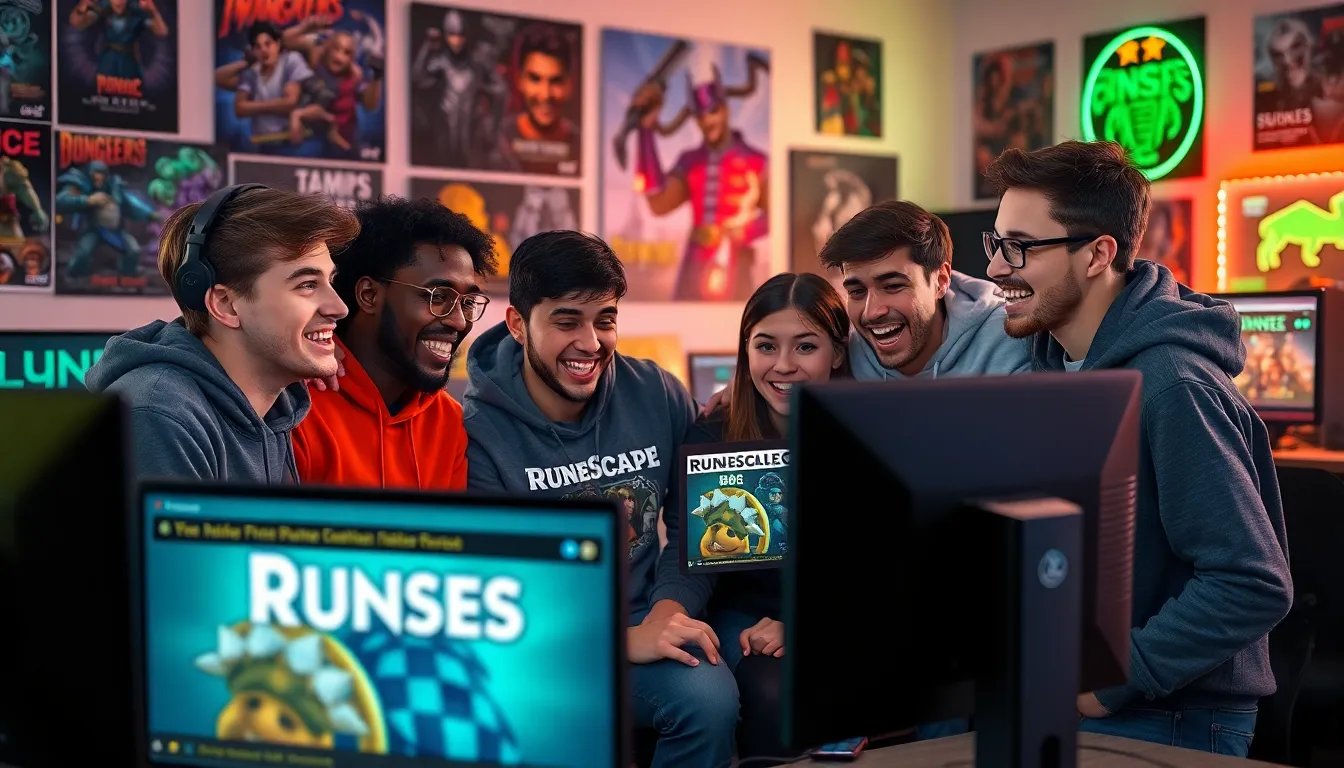Imagine exploring the vibrant streets of Tokyo or standing atop the majestic peaks of the Swiss Alps—all from the comfort of your living room. Virtual reality travel experiences are revolutionizing the way people discover the world, offering immersive adventures without the hassle of packing a suitcase.
As technology advances, the boundaries of travel are expanding beyond traditional methods. VR travel not only provides a unique escape but also opens doors to destinations that may be out of reach for many. With stunning visuals and interactive elements, these experiences allow users to engage with cultures and landscapes like never before. Whether it’s a guided tour through ancient ruins or a serene walk on a beach, VR travel is reshaping what it means to explore.
Table of Contents
ToggleOverview of VR Travel Experiences
VR travel experiences transform exploration by providing immersive adventures without leaving home. Utilizing sophisticated technology, this innovation makes global destinations accessible to anyone.
Definition of VR Travel
VR travel refers to the use of virtual reality technology to simulate real-world experiences, allowing users to explore destinations in a highly interactive manner. Users engage with 360-degree visuals, audio, and interactive elements, creating a heightened sense of presence. Examples include virtual tours of famous landmarks, immersive cultural experiences, and realistic simulations of outdoor activities like hiking or scuba diving.
Evolution of VR Travel Technology
VR travel technology has evolved significantly over the past decade. Early VR setups featured basic, static imagery and limited interactivity. Modern advancements include high-resolution graphics, improved motion tracking, and enhanced user interfaces. Companies now utilize high-fidelity headsets and software to deliver realistic environments. The advent of 5G technology further facilitates seamless streaming of high-quality content, shrinking lag and expanding user experience. As the technology continues to progress, VR travel experiences are poised to transform how individuals engage with the world.
Benefits of VR Travel Experiences

VR travel experiences offer numerous benefits that enhance the way individuals interact with global destinations.
Accessibility and Inclusivity
VR travel breaks barriers, providing access to locations that may be physically unattainable for some individuals. Those with mobility challenges or health conditions can explore diverse environments without the stress of travel logistics. Educational institutions utilize VR to offer students immersive experiences, connecting them to cultures and histories they may otherwise miss. Additionally, VR travel allows users from different socioeconomic backgrounds to experience luxury destinations without the associated travel costs.
Cost-Effectiveness
VR travel significantly reduces expenses compared to traditional travel methods. Users escape costs related to airfare, accommodation, food, and transportation. Organizations can implement VR travel for training purposes, enhancing team-building initiatives without the overhead of group travel. Virtual tours often come at lower ticket prices than physical tours, allowing more frequent exploration. These savings encourage sustainable travel practices by minimizing carbon footprints while still engaging with global cultures.
Popular VR Travel Platforms
Various VR travel platforms offer immersive experiences that transport users to exotic locations worldwide. These platforms utilize advanced technology to enhance explorations and interactions.
Leading VR Travel Applications
- Google Earth VR
Google Earth VR enables users to fly over cities, explore natural wonders, and visit landmarks worldwide in stunning detail.
- Wander
Wander allows individuals to travel the world through Google Street View, providing a first-person perspective of various locations and cultures.
- Viveport VR
Viveport VR features a collection of VR travel experiences, including guided tours and expansive environments, catering to various interests.
- Ascape VR
Ascape VR offers an assortment of 360-degree videos and virtual tours, showcasing diverse locations and enriching cultural experiences.
- National Geographic VR
National Geographic VR delivers educational content through immersive experiences, connecting users with wildlife and breathtaking landscapes.
Features and User Experiences
- 360-Degree Visuals
Popular VR travel platforms feature 360-degree visuals, providing users with a panoramic view of their surroundings.
- Interactive Elements
Many applications incorporate interactive elements that allow users to engage with their environment, enhancing the sense of presence and exploration.
- High-Quality Audio
High-quality audio complements the visuals, creating an immersive soundscape that adds depth and realistic ambiance to virtual environments.
- Accessible Tours
Platforms focus on accessibility, allowing users from various backgrounds and abilities to participate in virtual travel experiences.
- Multi-User Experiences
Some applications support multi-user experiences, enabling groups of friends or family members to explore destinations together in real time.
- Customizable Avatars
Users can create and customize avatars, enhancing personalization and adding a social aspect to VR travel experiences.
Challenges in VR Travel Experiences
VR travel experiences face several challenges that impact their effectiveness and user engagement. Two significant hurdles include technological limitations and user acceptance.
Technological Limitations
Technological limitations hinder the full potential of VR travel experiences. Current hardware, such as headsets and computers, often requires substantial investment, limiting access for many users. High performance is essential for smooth operation; however, performance issues like latency and low frame rates can disrupt immersion. Additionally, not all VR platforms offer realistic graphics that truly replicate real-world environments, affecting the overall experience. Furthermore, the necessity for high-speed internet connections restricts participation in some regions, where 5G technology hasn’t been fully deployed. This inconsistency in technology impacts the reliability and accessibility of VR travel.
User Acceptance and Adaptation
User acceptance poses another challenge in the adoption of VR travel experiences. Many individuals remain skeptical about the effectiveness of virtual exploration compared to physical travel. Psychological factors, including motion sickness commonly associated with VR, may deter users. Some potential users lack familiarity with VR technology, creating a learning curve that can inhibit enjoyment. Moreover, cultural perceptions regarding the value of authentic travel experiences versus virtual ones create barriers to acceptance. Addressing these concerns requires ongoing education and outreach efforts to promote the benefits of VR travel experiences, highlighting their accessibility and immersive qualities.
Future Trends in VR Travel Experiences
VR travel experiences are set to undergo significant advancements as technology evolves, impacting how people engage with travel planning and exploration.
Advancements in VR Technology
Advancements in VR technology enhance user experience and interaction. Companies develop higher resolution displays, providing crisp visuals that mimic real-world environments. Example developments include better field-of-view (FOV) capabilities—some headsets now reach up to 210 degrees. Innovations in haptic feedback integrate physical sensations, making experiences more immersive. Cloud rendering technology also reduces hardware requirements, allowing more users access without high-performance devices. Artificial intelligence (AI) increasingly tailors experiences by recommending destinations based on user preferences, further personalizing adventures. Additionally, collaboration between VR developers and travel agencies leads to unique promotional content, creating virtual travel packages that entice potential travelers.
Potential Impacts on the Travel Industry
The integration of VR travel experiences likely transforms the travel industry. Travel agencies may offer virtual previews of destinations, helping customers make informed decisions before booking trips. Hotels and resorts might utilize virtual tours as marketing tools, allowing potential guests to explore amenities and locations. Corporations could implement VR training for employees, streamlining onboarding processes and familiarizing staff with international offices. Furthermore, virtual experiences could drive interest in lesser-known destinations, distributing tourism and reducing overcrowding in popular locations. As VR travel becomes more accepted, it can foster connections among cultures, providing users an understanding of global issues, customs, and shared experiences without travel costs.
The rise of VR travel experiences is reshaping how individuals connect with the world. As technology continues to advance, these immersive journeys offer unprecedented access to diverse cultures and landscapes. With the ability to explore without the constraints of physical travel, VR opens doors for everyone, regardless of their circumstances.
While challenges remain in user acceptance and technological limitations, the potential for growth is immense. Future innovations promise even more engaging experiences, making virtual exploration a staple in the travel landscape. As VR travel gains traction, it not only enhances personal exploration but also fosters a deeper understanding of global cultures.








